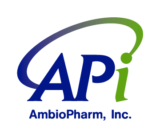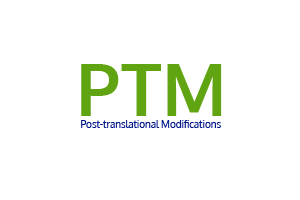First published: May 31, 2023
Changes to proteins or peptides that are catalyzed by enzymes after completion of ribosomal translation are called post-translational modifications (PTMs) and are typically covalent additions of a functional group to the protein or peptide.1 In general, PTM’s have a positive impact on peptide activity.
Some of the post-translational modifications that we can perform as a part of our peptide manufacturing services are:
- Acetylation: Adding an acetyl group (Ac) to the N-terminus or to a lysine side chain reduces the charge of the peptide.
- Cyclizations: There are several ways to cyclize a peptide or form a peptide macrocycle. Cyclizations can help with resistance to proteolytic degradation and improve protein-protein interactions. We can cyclize head-to-tail, end to side-chain, side-chain to side-chain, and also form thioethers and lactams.
- Disulfide bonding: A common side-chain to side-chain cyclization in peptides and proteins is the formation of a disulfide bond by covalently linking the sulfhydryl (-SH) groups of two cysteines. Multiple disulfide bonds or linkages can be made, depending upon the quantity of cysteines. Learn more about cyclizations via cysteine in our post here.
- Stapling: Stapling keeps a peptide in a preferred conformation, thereby improving its activity by preventing degradation.
- Fatty Acylation: Incorporation of a fatty acid can help promote membrane binding.
- Glycosylation: Adding a sugar to an “N” or “O” atom in an amino acid side chain. Glycosylation influences folding as well as cell adhesion.
- Hydroxylation: Incorporating a hydroxyl group to an amino acid side chain.
- Incorporation of D-Amino Acids and Unnatural Amino Acids: Substituting D-amino acids and/or unnatural amino acids can help prevent proteolytic degradation by making them unrecognizable by proteolytic enzymes.2
- Some examples of unnatural amino acids include 4-aminobutanoic acid (Aib), L-2,4-diaminobutanoic acid (Dab), L-2,3-diaminopropionic acid (Dap), L-homoarginine, and L-thienylalanine.3
- Methylation: Methylation can occur on an “N” or “O” or the “S”. We can add a methyl group to a cysteine, methionine, lysine, arginine, glutamine, histidine, or asparagine. Methylation can increase hydrophobicity and prevent proteolytic degradation.
- Pegylation: Pegylation by linking a polyethylene glycol increases stability and circulating half-life.4
- Phosphorylation: Adding a phosphate to a serine, threonine, or tyrosine side chain. Phosphorylation is a reversible modification that adds a charged hydrophilic group and can alter protein interactions.
Questions? Feel free to contact us or request a quote for your upcoming peptide project today. AmbioPharm has extensive experience in synthesizing peptides containing these modifications in scales up to late-clinical and commercial stages.
References:
- http://www.nature.com/subjects/post-translational-modifications
- https://www.sciencedirect.com/science/article/pii/S0196978121001741
- https://pubmed.ncbi.nlm.nih.gov/33281761/
- https://www.ncbi.nlm.nih.gov/pmc/articles/PMC4632829/
See also our FAQ on PTMs here: https://www.ambiopharm.com/faq/can-you-synthesize-peptides-with-post-translational-modifications/

 中文
中文